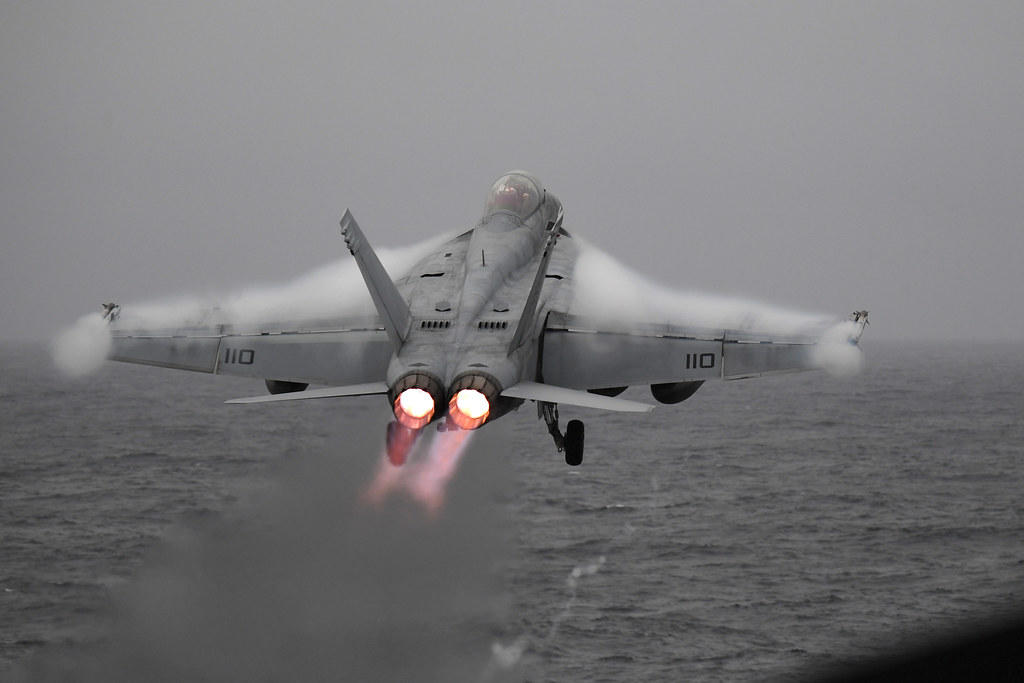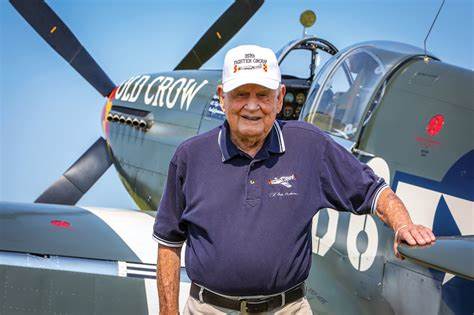
Brigadier General Clarence E. “Bud” Anderson, whose wings cut through European skies during World War II with deadly precision, making him a “triple ace” combat pilot, passed away in his sleep at age 102 in Auburn, California on May 17.

He leaves behind a legacy of bravery, innovation, and an indelible mark on American aviation history.

Anderson, born in Oakland, California, on January 13, 1922, joined the U.S. Army Air Forces shortly after the attack on Pearl Harbor. His natural talent for flying was evident from his early days in the Civilian Pilot Training Program at the age of 19.

During the war, he flew 116 combat missions as part of the 357th Fighter Group, tallying more than 16 confirmed aerial kills, solidifying his status as a “triple ace.”

The P-51 Mustang, his aircraft of choice which he affectionately named “Old Crow” after his favored brand of bourbon, became synonymous with Anderson’s combat prowess.

His exploits included an engagement on March 8, where Anderson claimed his first victory against a Messerschmitt Me-109.

“I was pulling a lot of Gs… I fired blind, and when he next came in view, black smoke was coming out — I got him in the coolant system,” Anderson recounted in a 2022 interview with Military Times.

His wingman confirmed his skill, saying, “’Best shooting I’ve ever seen in my life! You hit that son of a bitch out there at over 40 degrees!’”

Following WWII, Anderson’s career soared as he joined the jet age, becoming a test pilot at Wright-Patterson Air Force Base in Ohio.

He was instrumental in the development of early jet fighters and participated in unique programs such as flying experimental “parasite” planes that could dock with bombers mid-flight for increased range.

His military service saw him through the Korean and Vietnam Wars, during the latter of which he commanded the 355th Tactical Fighter Wing and flew 25 attack missions.

Over his 30-year military tenure, Anderson earned an impressive array of accolades, including five Distinguished Flying Crosses, 16 Air Medals, two Legions of Merit, a Bronze Star, and international honors such as the French Legion of Honor and Croix de Guerre.

In peacetime, Anderson’s contributions continued as he served as the manager of McDonnell Aircraft Company’s Flight Test Facility at Edwards Air Force Base, overseeing projects involving the F-15 Eagle, F/A-18 Hornet, and Boeing C-17 Globemaster.

His extensive knowledge also found him consulting for computer flying games, lecturing on aviation, and authoring an autobiography.

His death resonated throughout the aviation community and military circles. Mark Baker, AOPA President, lauded Anderson saying, “Bud was an incredible aviator, but more than that he was a humble, kind, and fun-loving guy. We are extremely grateful for his lifetime of dedicated service to this country and our condolences are with his loved ones.”
Relevant articles:
– Bud Anderson, last surviving World War II triple ace pilot, dies at 102, CBS News
– Bud Anderson, America’s last World War II ‘triple ace,’ dies at 102, Air Force Times
– Triple Ace Bud Anderson dies at 102, AOPA
– Clarence ‘Bud’ Anderson, Last World War II Triple Ace, Dies at 102, Military.com

